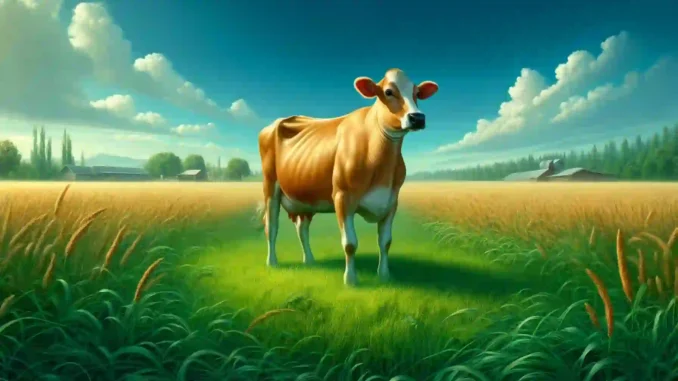
The Sahiwal cow, originally from the Sahiwal district in Punjab, Pakistan, is considered one of the best dairy breeds in the world. Known for its heat tolerance and high milk yield, this breed has become a preferred choice for dairy farmers in tropical and subtropical regions. This article delves into the history, characteristics, and current significance of the Sahiwal cow, providing a comprehensive look at why it stands out in the dairy industry.
Historical Background of Sahiwal Cow
The Origins of the Sahiwal Cow
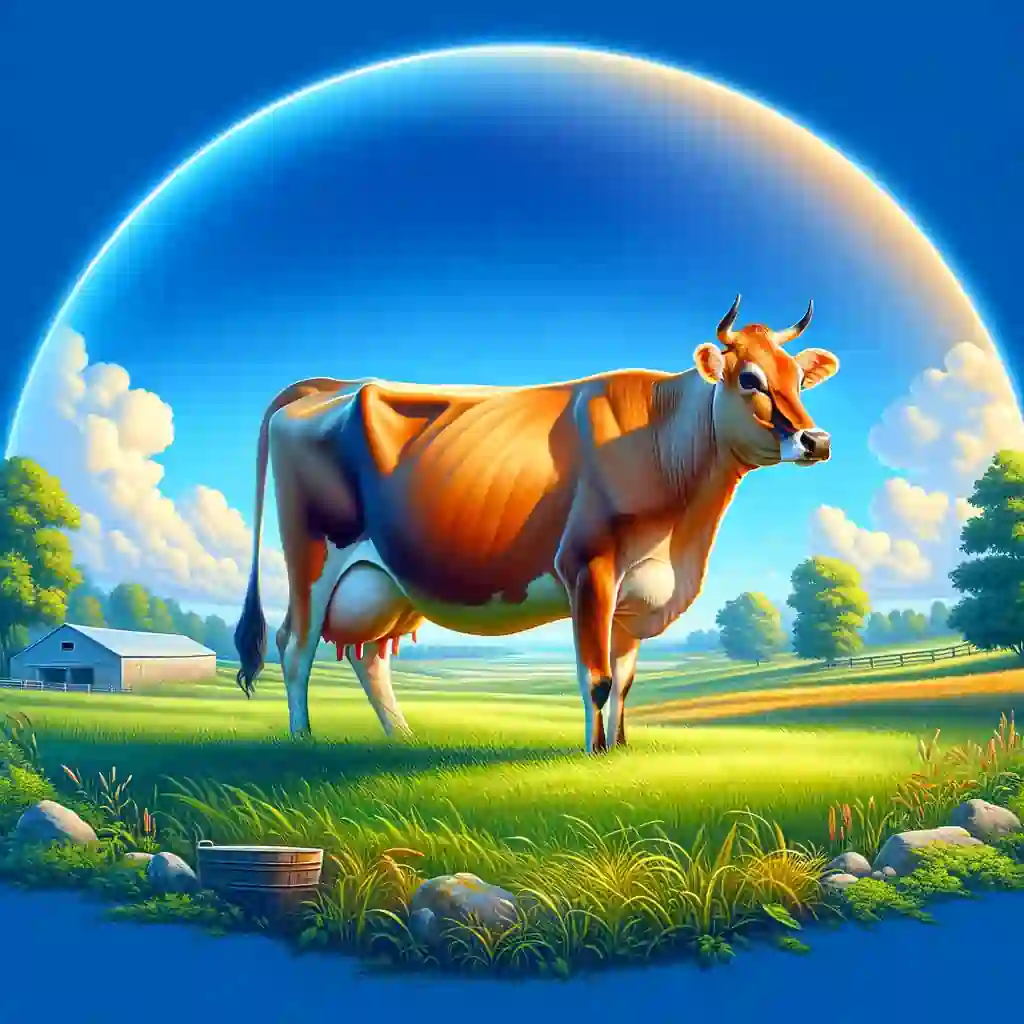
The Sahiwal cow, one of the most revered dairy breeds in the world, originated in the Sahiwal district of Punjab. This area, characterized by its arid climate and challenging farming conditions, is now divided between India and Pakistan due to the partition in 1947. The breed’s resilience and adaptability to such harsh environments are hallmarks that have been honed over centuries.
Historically, the Sahiwal was not only a source of milk but also a vital agricultural asset. Farmers utilized these cows for various farm tasks, benefiting from their strength and endurance. Over generations, through selective breeding, the primary focus shifted towards enhancing their milk-producing capabilities. Selective breeding was aimed at developing traits that would maximize milk yield and quality without compromising the animal’s health and ability to thrive in the tough local climate.
This selective breeding involved choosing the best performers under prevailing conditions—those that could produce significant quantities of milk even with limited resources and care. The resulting genetic refinement led to cows with not only high milk yield but also a greater resilience to local diseases and better overall productivity in the demanding conditions of the Punjab region.
The evolution of the Sahiwal cow was also influenced by the region’s cultural and economic conditions. As the local communities came to realize the value of milk as a dietary staple and a commodity for trade, the Sahiwal cow’s role in local economies grew more prominent. This further motivated the breeding practices that emphasized milk production, eventually cementing the Sahiwal’s reputation as a top dairy breed.
Today, the Sahiwal cow’s legacy is evident in its widespread popularity across different continents and its use in breeding programs aimed at improving cattle breeds worldwide. The breed’s journey from a regional farm animal to an internationally recognized dairy cow underscores its remarkable adaptability and the success of targeted breeding practices.
Characteristics
Performance Traits of the Sahiwal Cow
The Sahiwal cow is highly regarded in the dairy industry for its exceptional milk production capabilities and adaptability, traits that are essential for thriving in varied and challenging environments. This breed’s performance characteristics have been honed through generations of selective breeding, focused on optimizing both quantity and quality of milk production under less-than-ideal farming conditions.
High Milk Yield
Sahiwal cows can produce up to 2270 liters of milk during a typical lactation period, which generally lasts about 305 days. This high yield makes them particularly valuable in both small-scale and commercial dairy operations. The milk from Sahiwal cows is not only abundant but also rich in quality; it contains about 4.5% butterfat, a considerably higher fat content than many other dairy breeds. This high-fat content makes their milk ideal for producing butter, cheese, and other dairy products that benefit from a richer, creamier texture.
Milk Quality
The quality of milk produced by Sahiwal cows is a significant factor in their popularity. The 4.5% fat content is complemented by high levels of casein, a protein that is essential for cheese-making. Moreover, the milk also boasts a good balance of other essential nutrients, including proteins, vitamins, and minerals, making it highly nutritious.
Adaptability to Harsh Climates
One of the most critical performance traits of the Sahiwal cow is its remarkable adaptability to harsh climatic conditions. Originating from the Punjab region of South Asia, these cows are naturally acclimatized to high temperatures and humidity, environments that typically stress other breeds. This adaptability is attributed to several physiological and behavioral traits: their skin is loose and pliable with a short, sleek coat that helps in effective heat dissipation, and they exhibit behaviors like seeking shade and reducing movement during the hottest parts of the day, which conserve energy and minimize heat stress.
Robust Health
Sahiwal cows are known for their robust health and longevity, which are economically beneficial traits for farmers. They are less prone to common cattle diseases, thanks to their strong immune systems, and they also have a high fertility rate, ensuring regular calving without significant reproductive issues. These health traits reduce veterinary costs and improve the viability of dairy projects over long periods.
In summary, the Sahiwal cow’s performance traits—its high and rich milk production, resilience to tropical climates, and robust health—make it an invaluable breed in both its native regions and abroad. These capabilities allow it to play a crucial role in sustainable dairy farming practices globally, especially in areas facing climatic and environmental challenges.
Modern Significance
Sahiwal in Dairy Production Today
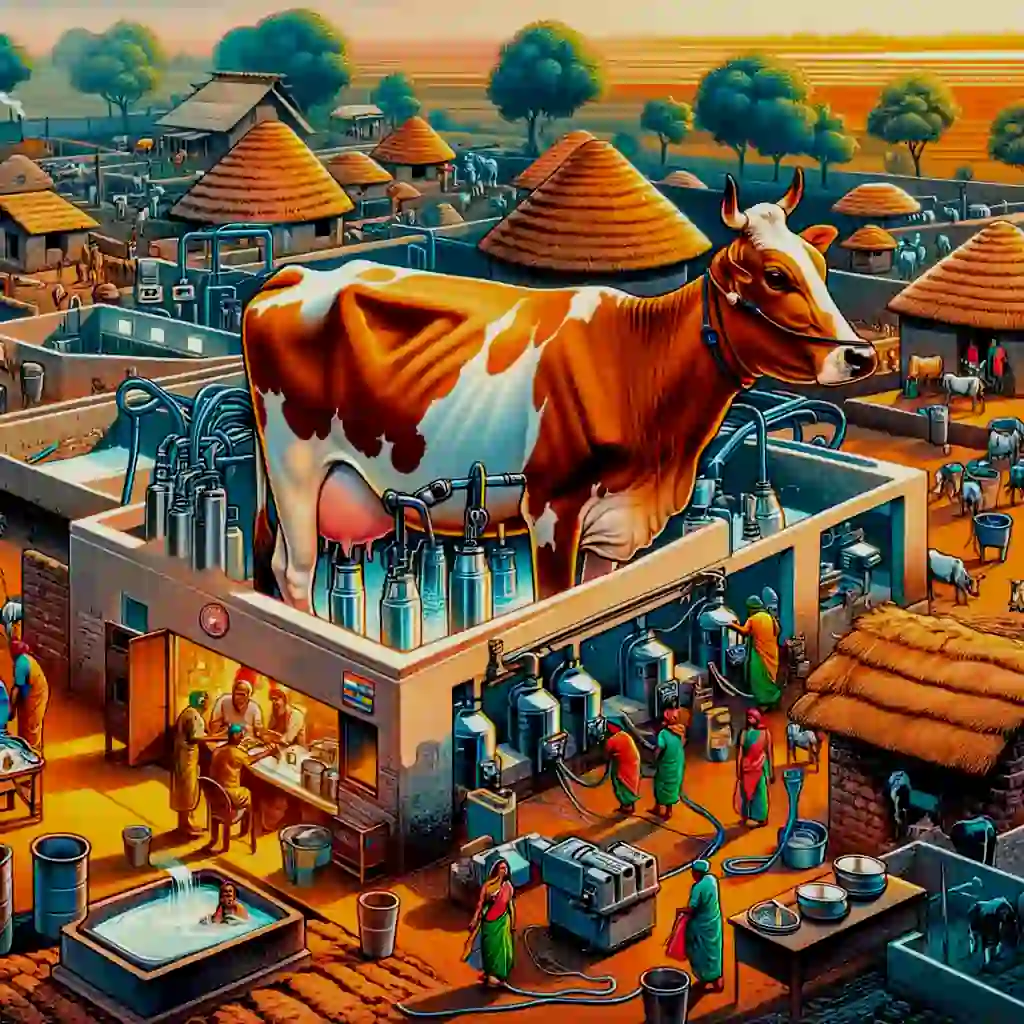
The Sahiwal cow continues to be a pivotal breed in the dairy industry of South Asia, particularly in India and Pakistan. Its significant role extends beyond just milk production, influencing rural livelihoods, agricultural practices, and national economies.
Economic and Social Impact
In India and Pakistan, where agriculture remains a backbone of the economy, the Sahiwal cow’s contributions are multifaceted. As one of the most productive dairy breeds in these regions, it supports the livelihood of millions of rural families. Many smallholder farmers rely on Sahiwal cows for their daily income derived from selling milk and dairy products. This income is crucial for their sustenance and represents a vital part of the rural economy. Moreover, the breed’s ability to thrive in the local climate without extensive inputs allows farmers with limited resources to maintain profitable dairy operations.
Contribution to the Dairy Sector
The Sahiwal’s high milk yield and the nutritional quality of its milk make it a cornerstone of the dairy sector in its native regions. Its milk is a preferred choice for the production of various traditional dairy products such as ghee, paneer, and various types of local cheeses. These products are not only staples in local diets but also form an essential part of the culinary heritage of the region, further enhancing the breed’s cultural and economic importance.
Sustainable Dairy Practices
Given the increasing focus on sustainable agricultural practices, the Sahiwal cow’s role is becoming more crucial. Its adaptability to high temperatures and resistance to local diseases allow it to produce efficiently in environments that are challenging for other breeds. This makes it an ideal candidate for sustainable farming models that aim to minimize environmental impact while maximizing productivity. Programs aimed at promoting organic and eco-friendly dairy farming often prefer Sahiwal cows due to their minimal requirements for chemical treatments and their ability to graze on less fertile lands.
Challenges and Opportunities
While the Sahiwal cow remains a valuable asset, the breed faces challenges such as genetic dilution and competition from more commercially prolific breeds. Efforts are ongoing in both India and Pakistan to preserve the genetic purity of the Sahiwal through various conservation programs and breeding initiatives. These efforts are not only aimed at sustaining the breed’s historical traits but also at enhancing its commercial viability through scientific breeding methods.
National and Global Relevance
On a national level, the Sahiwal contributes significantly to the GDP from the agricultural sector in both India and Pakistan. On a global scale, the breed is also part of international dairy development programs, particularly in regions facing similar climatic challenges, thus spreading its impact beyond its native borders.
In conclusion, today, the Sahiwal cow is more than just a dairy animal; it is an integral part of the rural landscape in South Asia, supporting economic stability and promoting sustainable agricultural practices. Its continued relevance and the efforts to preserve and enhance its traits ensure that the Sahiwal will remain a key player in the global dairy industry.
Challenges and Conservation
Challenges Facing the Sahiwal Breed
While the Sahiwal cow is celebrated for its remarkable attributes and contributions to dairy farming, it faces several significant challenges that threaten its sustainability and genetic integrity. These challenges include habitat loss, shifts in farming practices, and the increasing dominance of industrial dairy farming.
Habitat Loss
One of the primary challenges facing the Sahiwal breed is habitat loss. As urbanization accelerates, especially in its native regions of India and Pakistan, agricultural lands are increasingly being converted into residential and commercial properties. This encroachment not only reduces the grazing areas available for Sahiwal cattle but also fragments their living spaces, which can lead to genetic isolation and a decrease in breed vigor.
Changing Farming Practices
The traditional farming practices that supported the natural breeding and rearing of Sahiwal cows are gradually being replaced by more intensive and commercial farming techniques. These modern practices often prioritize high-yielding breeds that can produce more milk per cow but may not have the same resilience or adaptability as the Sahiwal. Consequently, the Sahiwal’s less intensive milk production is often undervalued, leading to decreased interest in maintaining purebred populations.
Shift Towards Industrial Dairy Farming
Globally, there is a shift towards industrial dairy farming, which emphasizes maximum milk output, often at the cost of animal welfare and genetic diversity. Industrial dairy farms typically use high-yielding breeds and crossbreeds, which can produce vast quantities of milk using artificial feeding and breeding techniques. This focus on yield over resilience can sideline breeds like the Sahiwal, which, while highly productive, do not match the output levels of some specialized Western dairy breeds.
Genetic Dilution
The widespread use of Sahiwal genetics in crossbreeding programs, intended to enhance other breeds, also poses a risk of genetic dilution. While these programs have spread Sahiwal traits globally, they have also led to a reduction in the number of purebred Sahiwal cattle. Maintaining genetic purity is crucial for preserving the breed’s unique characteristics and ensuring that it can continue to offer the same benefits in terms of resilience and adaptability.
Economic and Policy Challenges
Economically, the lower yield of Sahiwal cows compared to more intensive breeds can make them less attractive to large-scale dairy operations, leading to reduced investment in the breed. Additionally, lack of supportive policies and subsidies for maintaining and promoting heritage breeds like the Sahiwal further exacerbates the issue, as farmers often choose more financially rewarding options.
Future Prospects
Addressing these challenges requires a multifaceted approach that includes conservation efforts, supportive agricultural policies, and awareness programs highlighting the Sahiwal’s advantages in sustainable farming contexts. By promoting genetic preservation, encouraging sustainable grazing practices, and adjusting economic incentives to support heritage breeds, the Sahiwal can continue to be a valuable resource for resilient, environmentally friendly dairy production. These efforts are essential not only to preserve this unique breed but also to maintain biodiversity and promote sustainable agricultural practices globally.
Conservation Efforts for the Sahiwal Breed
The Sahiwal cow, with its distinguished dairy capabilities and resilience to harsh climates, has been the focus of various conservation efforts both in its native lands and internationally. These initiatives are crucial to ensure the survival and purity of this heritage breed amidst modern agricultural pressures and changing environmental conditions.
Maintaining Pedigree Records
One of the foundational aspects of conserving the Sahiwal breed involves maintaining accurate and comprehensive pedigree records. These records are essential for tracking the lineage and genetic traits of individual animals, ensuring that breeding programs are based on genetically diverse and healthy stock. This not only helps in preserving the genetic integrity of the Sahiwal breed but also aids in studying its characteristics and potential for further development. Breed registries and livestock associations in countries like India and Pakistan, along with international organizations, play a critical role in compiling these records.
Promoting Sustainable Breeding Practices
Sustainable breeding practices are vital to the conservation of the Sahiwal cow. These practices include the selection of breeding stock based on genetic health and diversity, rather than just productivity, which helps prevent inbreeding and preserves the breed’s unique traits. Furthermore, these practices encourage natural mating and calving, which are beneficial for the cow’s health and the vitality of the offspring. Conservation programs often include training for farmers on how to manage their breeding programs to maintain breed purity while also improving traits like milk yield and disease resistance.
Support for Small-Scale Farmers
Supporting small-scale farmers who raise Sahiwal cows is another critical element of conservation efforts. These farmers are often the custodians of the breed’s genetic diversity, but they may lack the resources to optimize their breeding practices or compete with large commercial farms. Initiatives that provide financial assistance, education, and access to premium markets can empower these farmers to continue raising Sahiwal cows under optimal conditions. This support not only helps preserve the breed but also promotes rural economies.
Establishment of Dedicated Conservation Programs
Both governmental and non-governmental organizations have established dedicated conservation programs aimed at the Sahiwal breed. These programs might include subsidies for farmers who keep purebred Sahiwals, grants for research into the breed’s genetics and adaptability, and public awareness campaigns about the importance of heritage breeds. For example, in Pakistan, the government has set up breeding farms specifically for the Sahiwal to ensure that high-quality genes are preserved and available for future generations.
International Collaborations
Internationally, there are collaborations between countries that benefit from the Sahiwal’s traits, such as those in East Africa and the Caribbean, to establish gene banks and breeding centers that focus on the Sahiwal. These efforts are supported by international agricultural development agencies and aim to enhance local cattle breeds while ensuring the Sahiwal’s traits are not lost.
The Way Forward
These conservation efforts are crucial for maintaining the genetic purity and sustainability of the Sahiwal breed. By focusing on pedigree accuracy, sustainable breeding, and farmer support, alongside broader conservation programs, stakeholders can ensure that the Sahiwal continues to thrive. This not only benefits biodiversity but also supports sustainable agricultural practices that are increasingly vital in a changing global climate.
Conclusion: The Significance of the Sahiwal Cow in Modern Agriculture
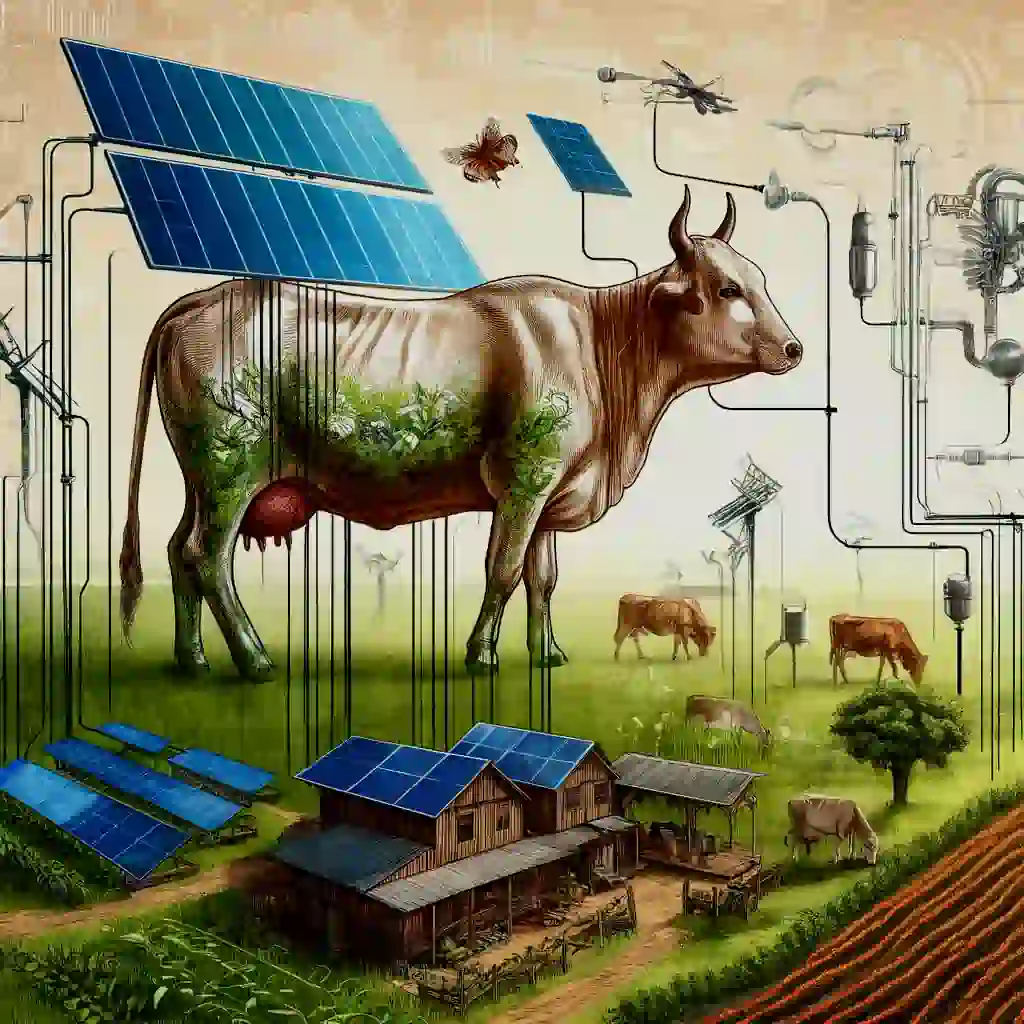
The Sahiwal cow transcends its role as a mere dairy animal; it embodies resilience and sustainability in the agricultural sector. This breed’s unique characteristics make it not only a vital component of the dairy industry but also a symbol of enduring agricultural practices that can lead to a more sustainable and environmentally friendly future.
Symbol of Resilience
The Sahiwal cow’s ability to thrive in harsh environments, resist diseases, and produce high-quality milk with minimal inputs showcases its resilience. This makes it an invaluable asset in regions prone to climatic stresses and resource scarcity. As global agriculture faces increasing challenges from climate change, such as higher temperatures and more frequent droughts, the Sahiwal’s natural hardiness becomes even more critical. This breed demonstrates that it is possible to maintain productivity and profitability in farming without excessive reliance on artificial supports and unsustainable practices.
Sustainability in Dairy Production
In the context of global dairy production, breeds like the Sahiwal offer a model for sustainability. Their efficient use of resources, including the ability to graze on less fertile lands and require less water and feed than many high-yielding dairy breeds, positions them as ideal candidates for sustainable dairy farming. Emphasizing these traits can help shift the industry away from high-input and high-impact farming methods that are not sustainable in the long term.
Integrating Traditional Breeds
The integration of traditional breeds like the Sahiwal into modern dairy practices is not just about preserving these breeds but also about leveraging their genetic traits to enhance the sustainability of the industry. Crossbreeding programs that incorporate Sahiwal genetics can create new lines of cattle that are both productive and environmentally adaptable. Moreover, maintaining genetic diversity through the conservation of traditional breeds ensures that agriculture remains resilient against future ecological and economic challenges.
A Model for Future Farming
The Sahiwal cow serves as a model for the future of farming, where diversity, adaptability, and sustainability are paramount. Encouraging the use of breeds like the Sahiwal in global agricultural practices can lead to a more balanced approach to food production, where environmental health and animal welfare are as important as productivity and profit.
Advocacy and Policy Support
To fully realize the potential of the Sahiwal cow in modern agriculture, it is essential for policymakers, industry leaders, and communities to advocate for and implement supportive measures. These might include subsidies for sustainable farming practices, research into breed conservation, and public education campaigns to raise awareness about the benefits of traditional breeds.
In conclusion, the Sahiwal cow’s journey from the arid regions of Punjab to being a cornerstone of sustainable agriculture globally illustrates its broader significance. As the world looks towards more sustainable agricultural solutions, the Sahiwal stands out as a key to a resilient future, highlighting the importance of integrating traditional knowledge and genetic heritage into contemporary farming practices.
Explore More About : Buffalo Milk Benefits
Boost your Mindset: 40 Powerful Positive Affirmations for Business and Personal Development in Hindi
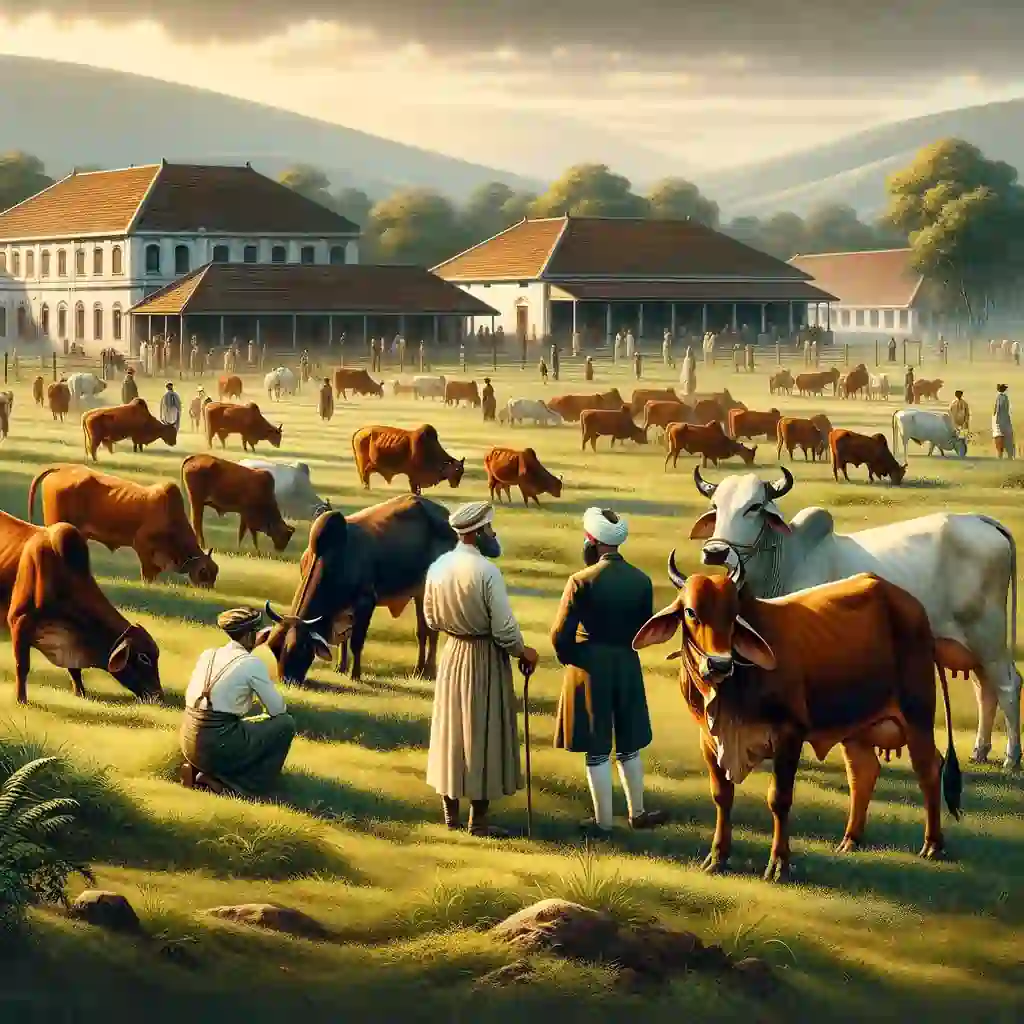
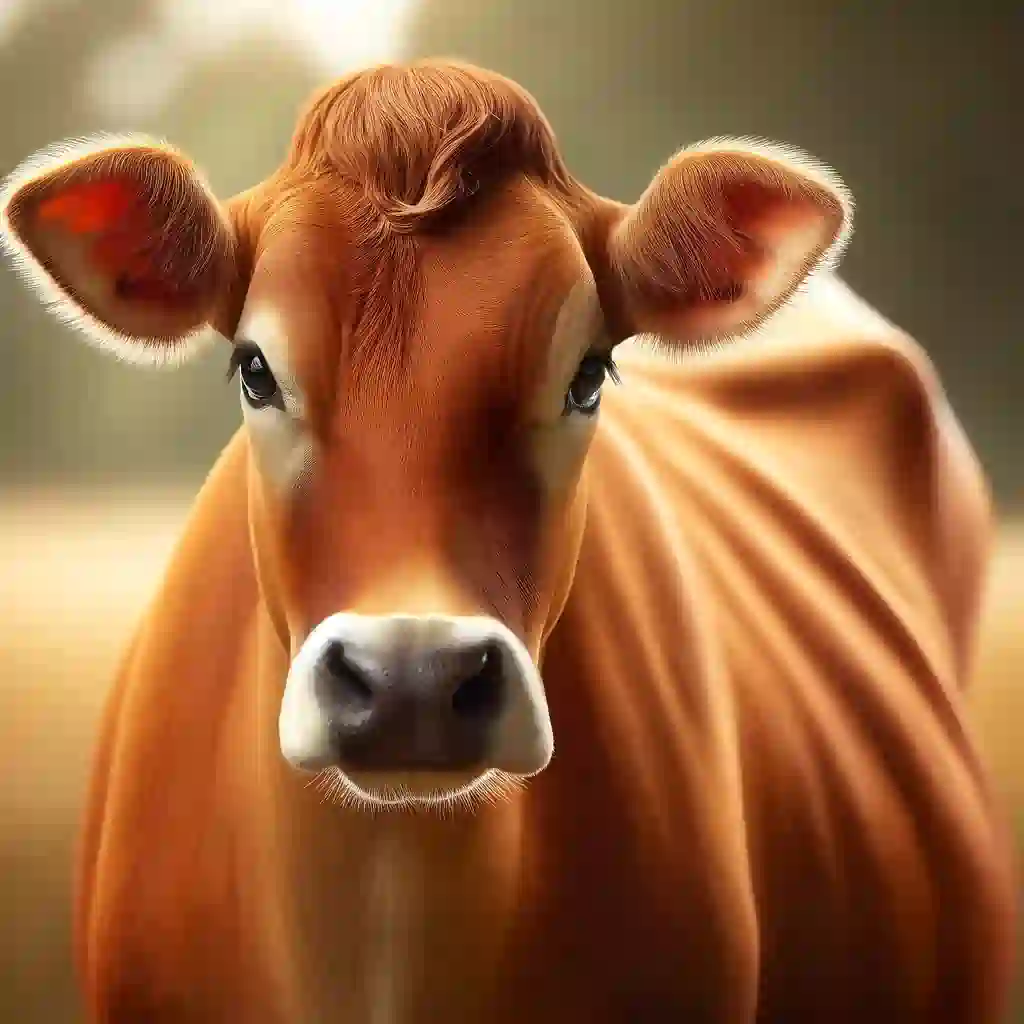
Be the first to comment